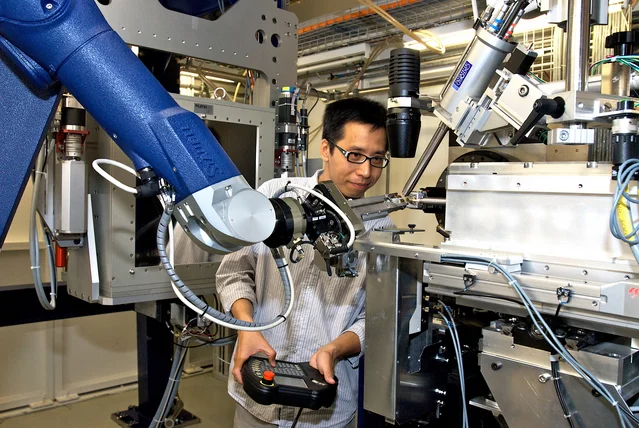A beamline guides the synchrotron light (X-rays), which is produced by the circulating electrons, to the experimental stations. Such a beamline consists of several parts:
- The Source, which is either an undulator, a wiggler or a bending magnet. Undulators and Wigglers are called Insertion Devices, because they are "inserted" into straight sections of the storage ring. The most popular source in a modern synchrotron light source is the undulator, which is either composed of an array of permanent magnets or an array of electro-magnets.
- The Front End, which contains slits, beam windows and safety components like beam shutter and beam stopper.
- Mirrors, which deflect and focus the X-rays onto the experimental sample. At the same time they can serve as filters, to cut away the unwanted part of the synchrotron light spectrum.
- Conventional lenses cannot be used to focus X-rays, due to a lack of transmission. Instead one uses well polished, high precision mirrors, such as copper plates or crystals (like silicon), which reflect the beam under very shallow angles (<1°). These mirrors or usually coated (with a thin metal layer) and can be dynamically bent to focus the beam.
- The Monochromator, which selects a single wavelength with high resolution. It can either be a crystal (for hard X-rays) or a grating (for soft X-rays).
- The Experimental Station with sample holder and Detector Equipment, which registers the signals caused by the interaction of the X-rays with the sample.
The source and the front end are stationed inside the storage ring tunnel. The other part of the beamline is usually located in separate Experimental Hutches, which have lead walls to shield against the X-rays. Some beamlines using only soft X-rays do not need such a shielded hutch.
For more technical details about the individual beamlines we refer the reader to the special sections on Beamlines .
